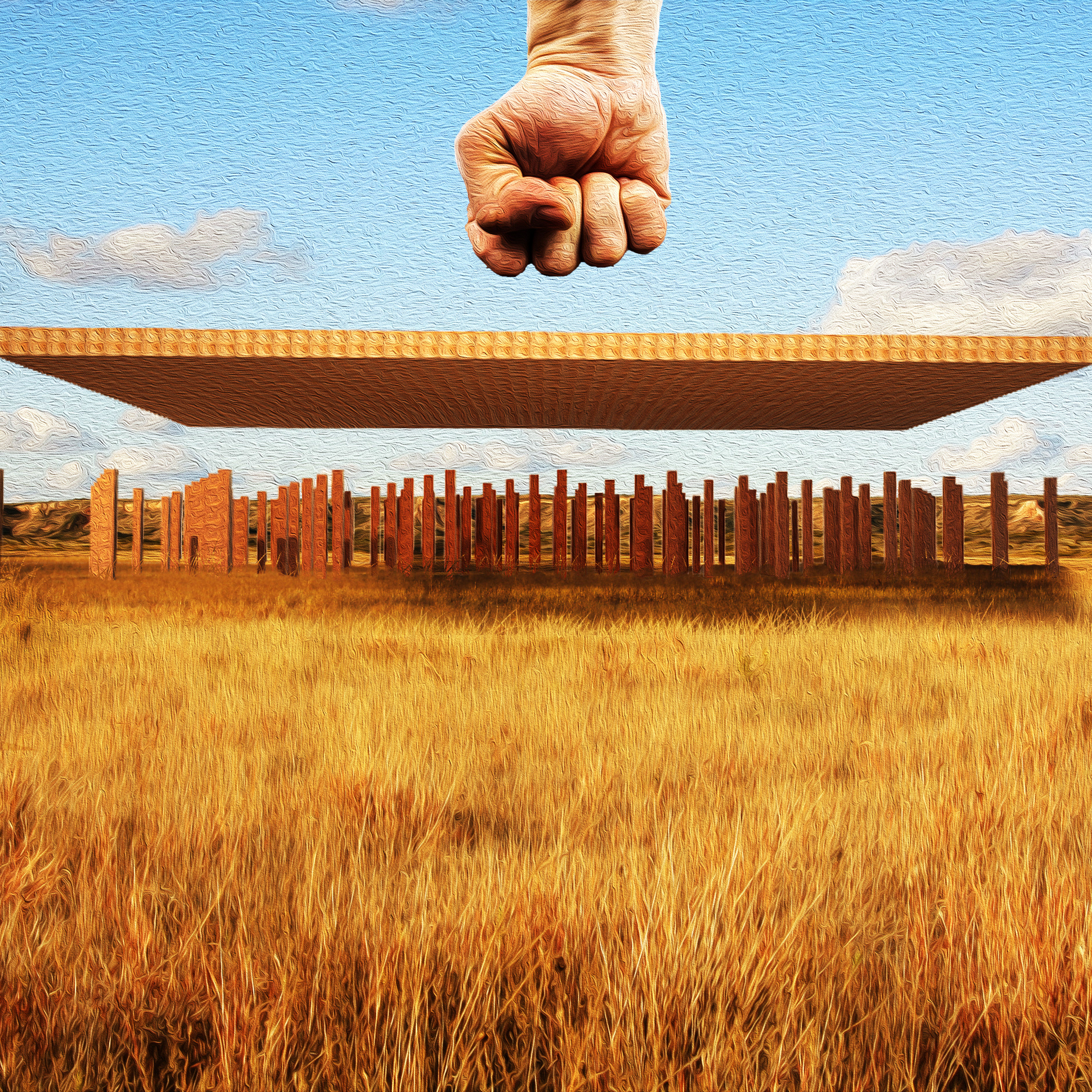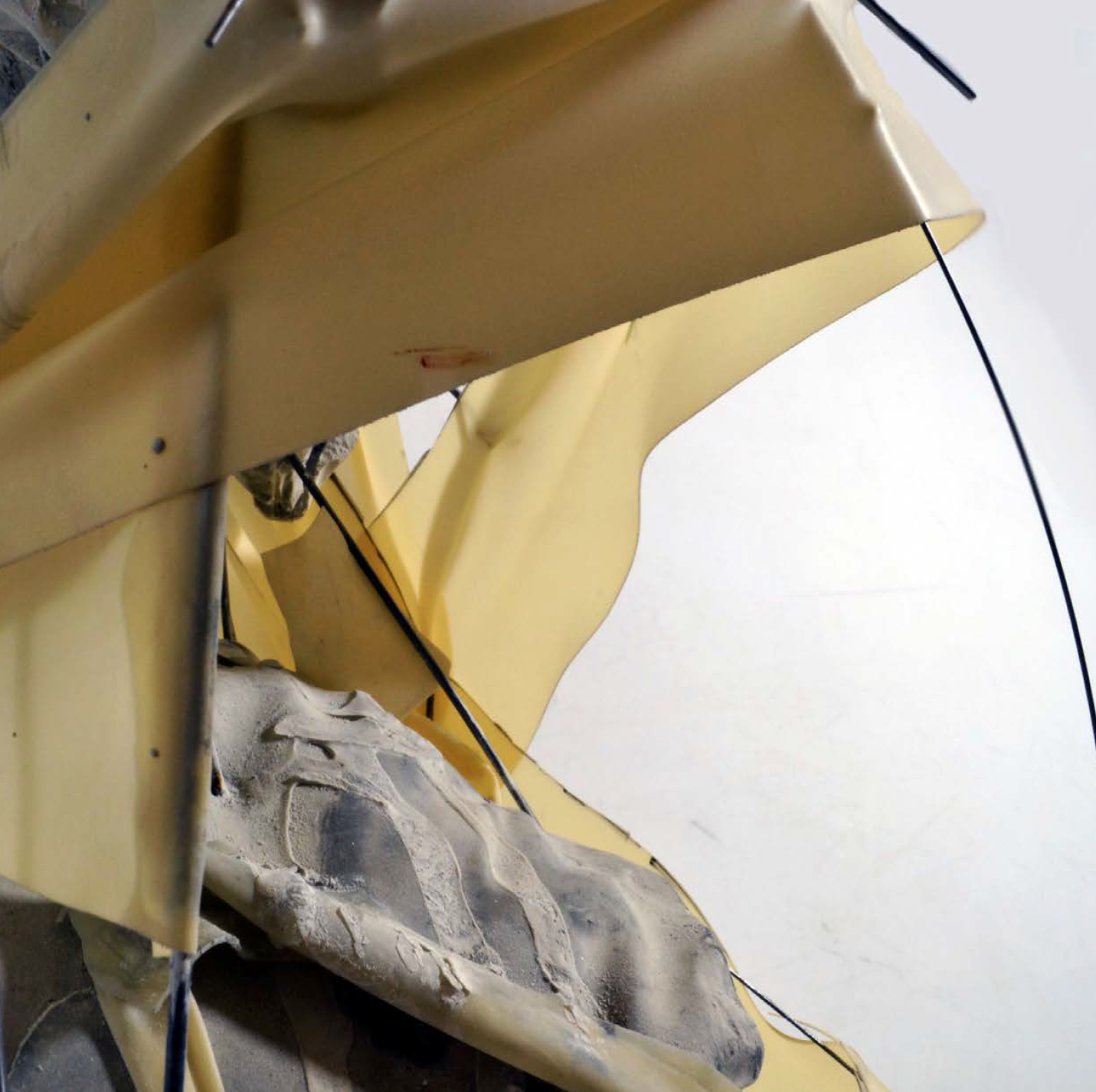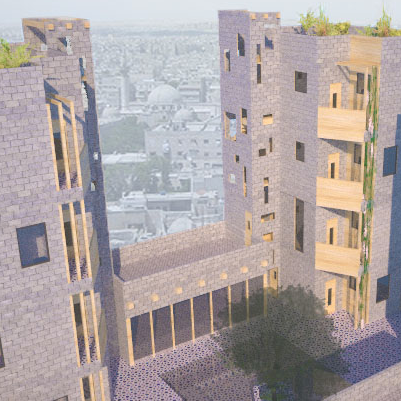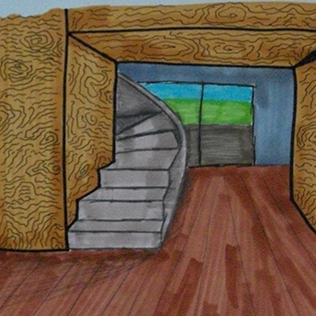
Politics of Prison
These renderings speak to certain oppressive institutions within contemporary society. This project began as a thinking piece for the injustice in the prison system, and evolved from there into a triptych. The architectural forms of each evoke a certain generalized or universal architecture representative of each institution. The white male hands push the roof onto the prison, squeeze the student between toothed walls, and embody divine intervention as depicted in many historic Western artworks.

Manhattan Schist Apartment
An analysis of movement around one of the Manhattan schists transformed into a discovery of spatiality and form via the gradual introduction of three materials into the model-making process: wire, latex, and Rockite. Taking from the spaces and forms produced by these stubborn materials, the final program
asked to derive a new apartment building located on W114 Street, a site also dominated by a Manhattan schist. The resulting model, combining all three materials, interprets the Rockite - formed via casting into latex and wire mini models - as the living space, while wire and latex struggle to balance the stacked concrete forms in a complicated series that also reinterprets itself as circulation space in the accompanying sections and plans. No apartment is alike, all are unique in their rounded and folded geometries as they spiral upward, uniting
with the schist and surrounding edifices. The stairs also take a complex and exciting spiral shape, terminating at unforeseen terraces and twisting upward.
An interesting public-community space manifests itself in an open-air floor just
under the top apartment.
Architecture

Post-War Housing in Syria
Project for post-war housing in Syria that focuses on Aleppo and creating community spaces for families. Project was entered into Matter Better's competition. Worked in collaboration with Logan Capone, Victoria Chaney, and Savannah Wu.
Architecture, Interior Design, Landscape Design

Hewer House and Studio
A split site in Provincetown, Massachusetts posed a challenge for Welsh photographer Mitchell Hewer. He wanted a dual home and studio that was modern while reflecting the traditional Cape Code style. In the end, the studio and home were split on the two parts of the bow-tie site and connected via a wooden bridge. The house is dominated by a large wooden tower that holds both the gallery and bathroom and filters light down into the gallery. Large windows are placed in the eastern and western facades to direct the sunlight - important to photography - throughout the day.
Created for Architectural Drawing class at Boston University.
Architecture